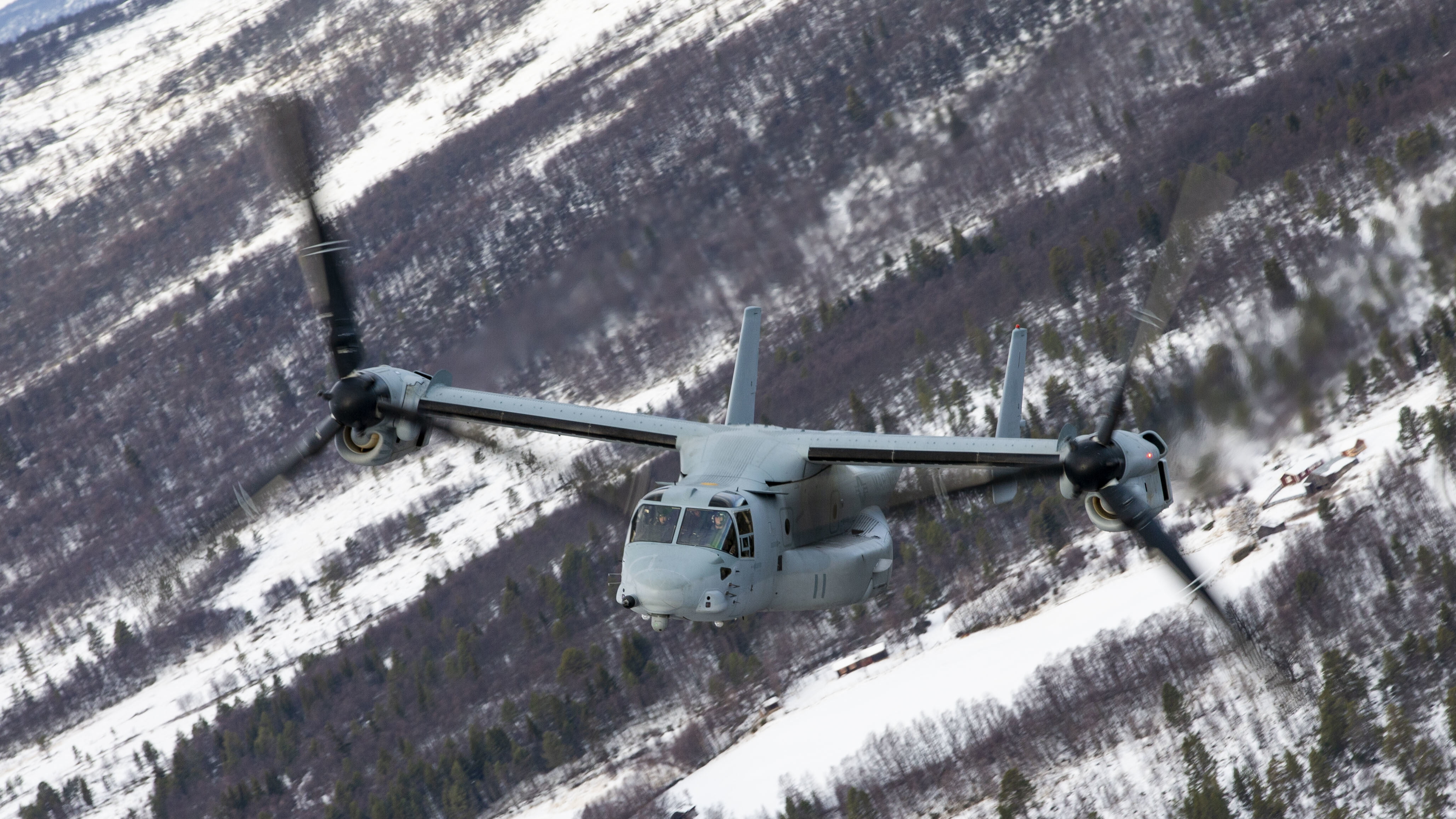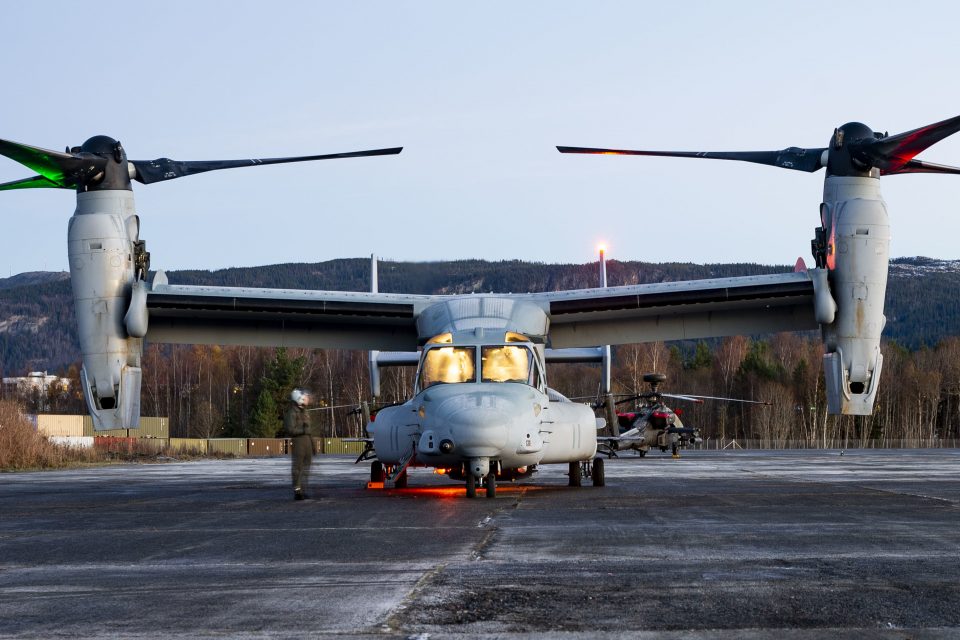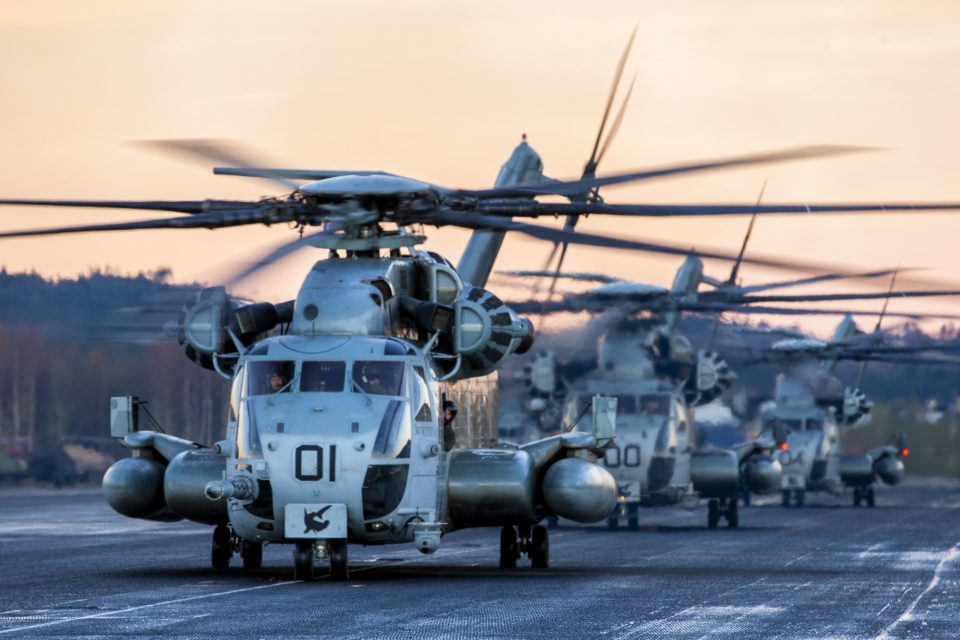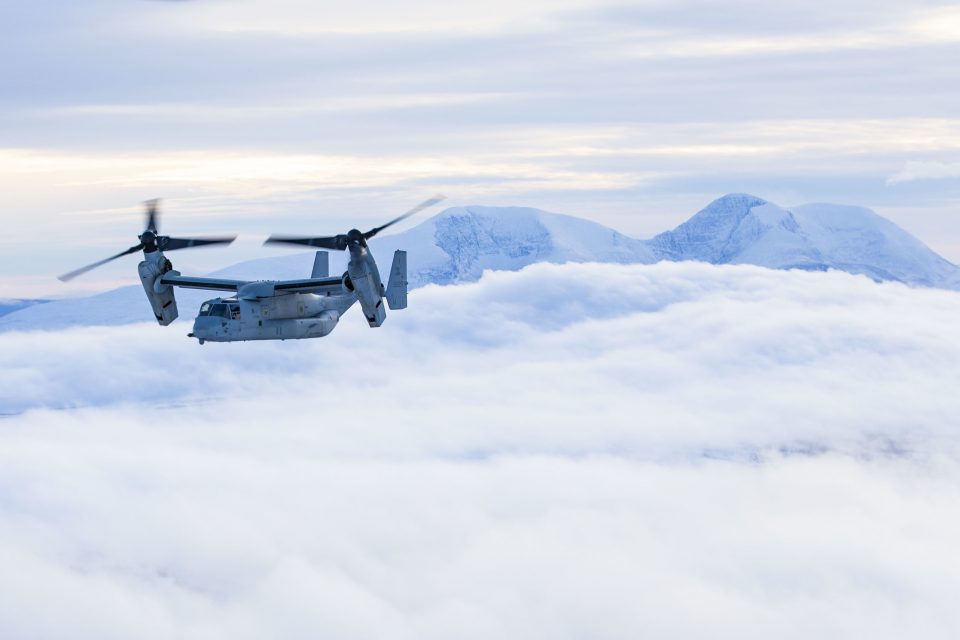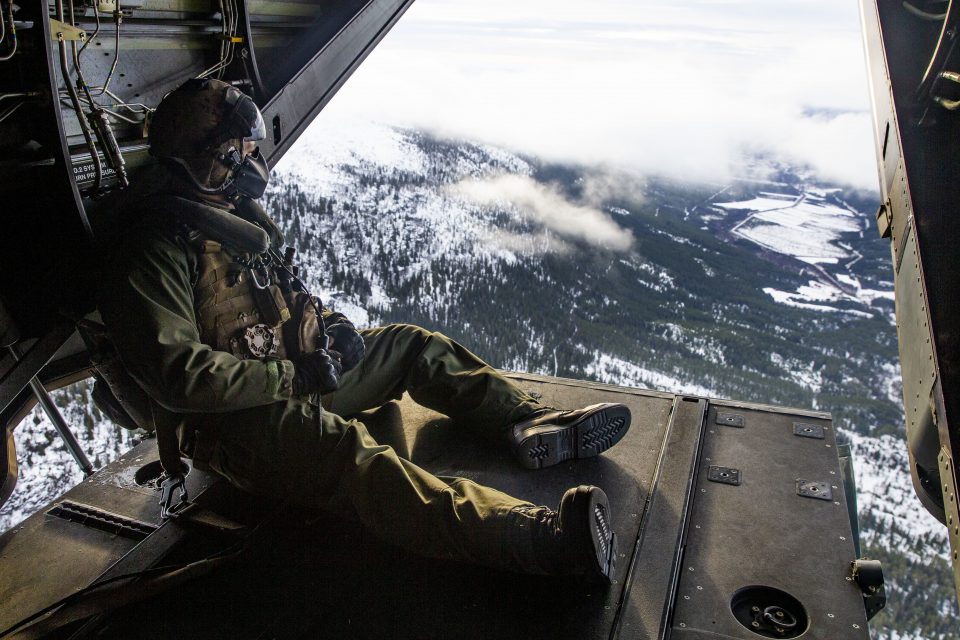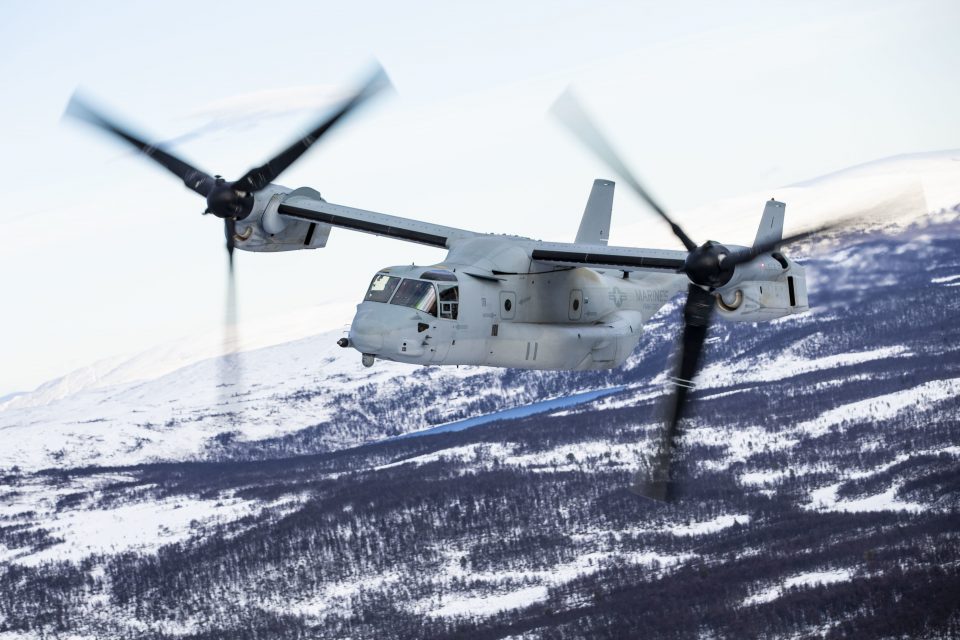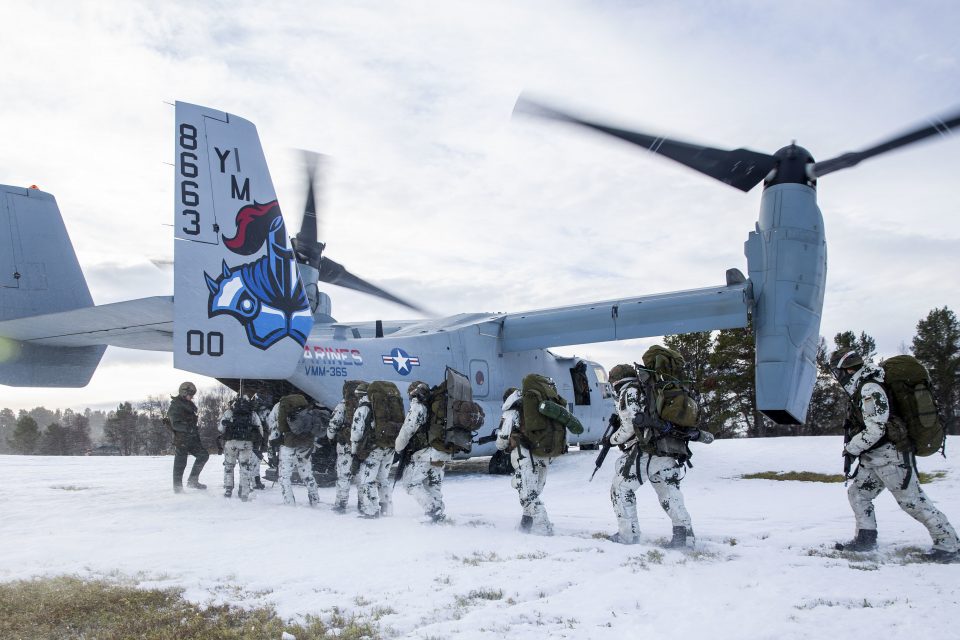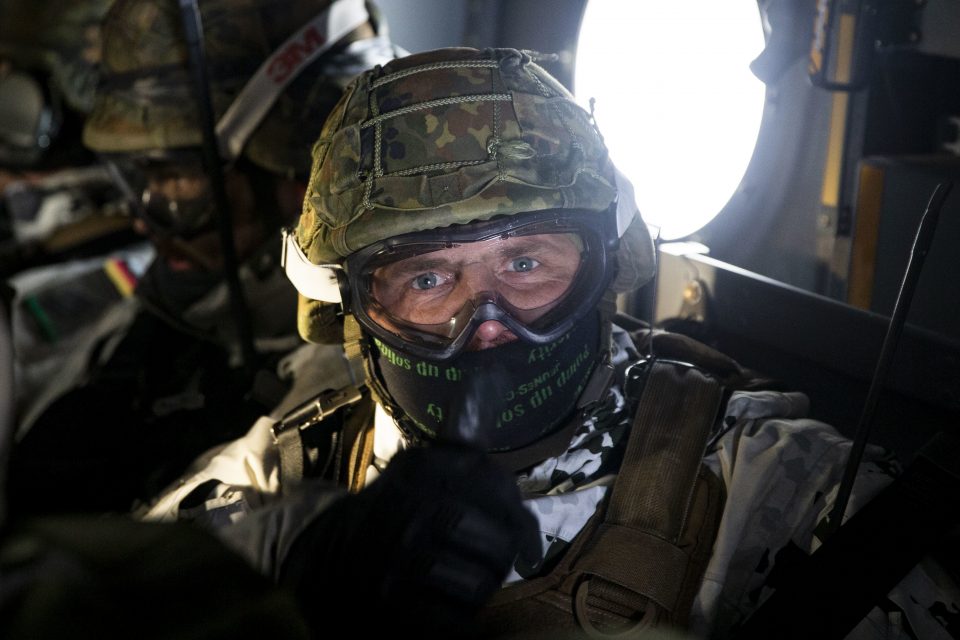By Robbin Laird
Last year during my visit to Norway, I had a chance to visit several airbases and talk with a wide variety of Norwegian officers and defense officials.
With the return of direct defense challenges to the Nordics, there has been a major shift to recapitalizing the force, introducing mobilization measures and reworking the concepts of operations to deal with the Russian threat.
But it has been nearly two decades since the Nordics have faced a direct defense threat and at that time, they were facing the Soviet Bloc, and not simply Russia. This meant that the core threat they faced in times of war would be an amphibious assault from the Soviets similar to what the Germans did against them in World War II.
But now the threat is different and the concepts of operations not the same as well.
For the Nordics, the Trident Juncture 2018 exercise was a building block for shaping approaches to dealing with the new strategic situation.
The Norwegian Ministry of Defence described the exercise as follows:
The exercise will test the whole military chain – from troop training at the tactical level, to command over large forces. It will train the troops of the NATO Response Force and forces from other allies and partners, ensuring they can work seamlessly together.
WHY NORWAY?
This exercise has air, sea and land elements, and Norway offers the possibility to train realistically in all of these domains. The cold and wet weather will pose additional challenges for NATO troops, and will train them to operate in extreme conditions.
Norway offered to host Trident Juncture 18, and NATO accepted the offer more than four years ago. Norway has a long tradition of hosting major allied and multinational military exercises. Among them are Cold Response, Dynamic Mongoose and Arctic Challenge.
WHY DO WE EXERCISE?
Since 2014, collective defence has become a more prominent feature of NATO, due to the changes in the global security situation. In order to train and test NATO’s ability to plan and conduct a major collective defence operation, the Alliance has held several large-scale exercises. This autumn, the turn has come to Norway.
Trident Juncture is also a great platform to cooperate with close partners like Finland and Sweden – exchanging best practices and working together to address crises.
(For a comparison of Trident Juncture 2015 and 2018, and what has already happened in three short years, see the following:
https://defense.info/highlight-of-the-week/trident-juncture-exercises/).
During my visit to 2ndMarine Air Wing earlier this month, I had a chance to talk with Marines involved in the exercise to get their sense of the return of direct defense in Northern Europe and the challenges facing the Marines to provide the kind of force engagement which ultimately the Nordics, the US and NATO would like to see in terms of coalition interoperability necessary to operate in a crisis situation.
In my first article based on my visit, I focused on MAG-31 and the role of fast jets; in this article, I am going to focus upon MAG-26 and the participation of VMM-365 in the exercise. VMM-365 is an Osprey squadron.
I had a chance to talk with the CO of MAG-26, Col. Boniface, whom I have met with several times before he took this command, and Lt. Col. Fowler, the CO of VMM-365.
According to Col. Boniface: “It is important to note that during the exercise, which encompassed actions in Iceland and Norway, the V-22 operated above the Arctic Circle.
“We were able to deploy, engage and provide presence in the exercise. We had to deal with the weather and operating conditions in the region, which are quite different from where our Marines have spent most of their time in the past decade.
“And we need to continue to learn how to operate in those conditions, and to have the domain knowledge of how to exercise patience and timing appropriate to operations in the Nordic region.
“The weather comes in, each fjord has its own weather so to speak and we have to learn patience and how to deal with the second and third order affects which operating in cold weather generates.”
Most of the conversation about the Trident Juncture 2018 engagement involving MAG-26 focused on the experiences of VMM-365 and Lt. Col. Fowler provided an overview and various insights into the USMC experience.
According to Lt. Col. Fowler, the impact of Hurricane Florence on North Carolina meant that they had reduced participation in the exercise. The initial plan was to send six aircraft, but they did send 114 Marines and 4 Ospreys to the exercise.
Lt. Col. Fowler highlighted that they operated from the Iwo Jima amphibious ship and in Iceland did a raid against an “enemy” airfield. That raid was launched from the ship and the force returned to the ship after the raid.
The raid did not highlight the long-range capability of the Osprey but rather operated as integral part of the insertion force which also included CH-53Es and related assets.
A major piece of the operations in both Iceland and Norway was working with the Osprey in cold weather conditions. Notably, they were operating the Osprey’s de-icing capabilities and getting a comfort level with the aircraft in cold weather conditions.
Lt. Col. Fowler underscored the point made by Col. Boniface with regard to the importance of weather conditioning and learning in Norway during the exercise.
“The Norwegians are great partners. They supported us as we worked our learning curve in the cold weather environment. But clearly we need to improve the communication systems used during the exercise, to get the full combat capability out of our force and to better integrate with the Norwegian force as well.”
And as all pilots note when flying in Norway, it is not just the weather, which is challenging but the terrain and the infrastructure built into the terrain as well.
“With the towers and power lines running throughout the fjords, it is dangerous for aircraft operations. And we operate both as a helicopter and as an airplane so we faced challenges which are both the same but different for both type of craft all rolled up into one type of aircraft!”
“There was extensive use of UASs as well during the exercise, which creates a challenge to sort out the operations of the manned with the unmanned aircraft operating in the same airspace as well. Clearly, this is a work in progress.”
One change which is critical to reshaping operations is the nature of the local community, meaning that when operating in Norway it was clear that they are a committed ally and the population was highly committed to supporting Marine Corps operations, including providing real time intelligence with regard to the “enemy” force. This was noted as a significant difference from USMC operations in the Middle East.
VMM-365 Flight Operations During Trident Juncture 18 from SldInfo.com on Vimeo.
In short, the picture provided of MAG-26 involvement in Trident Juncture 2018 reinforced the picture provided by MAG-31. The exercise was a success in terms of being able to project force, but to get the full combat value from a Marine Corps force in a real crisis, significant effort needs to be directed towards enhanced capabilities to integrate the insertion force with the host nation and its force.
My discussions in Norway as well as Denmark have underscored how important shaping an effective C2 system for the defense of Northern Europe. In an interview with Brigadier General Rygg conducted last year at Bodø Airbase, the Chief of the Norwegian Air Operations Centre highlighted the importance of getting C2 right in the new strategic situation.
Brigadier General Rygg: “We are building out new C2 capabilities within the National Joint Headquarters. It is about technology and reworking the workflow.
“We are bringing the key players into a close working relationship within the mountain to provide for better crisis management support as well.”
As infrastructure changes, the focus will as well to provide for crisis management support.
Brigadier General Rygg: “We are shifting from a classic joint targeting approach to a joint effects approach. Every time that you do something with the military, you are creating an effect.
“We are fielding new systems, which provide capabilities we have not had in the past.
“How do we use these systems to create the appropriate joint effect?”
The kind of C2 system needed is clearly an agile, scalable and flexible one.
Brigadier General Rygg: “We may need to provide for mission control where the autonomy of key systems will be maximized.
“We may need to have a tight hierarchical C2 system.
“It depends on the threat; it depends on the mission and on the crisis management situation.
“But we need to build in redundancy and flexibility from the ground up.”
Clearly, the Marines agree and would underscore the core importance of enhanced interoperability in a crisis situation to get full benefit from working together.
Colonel Chris Boniface
MAG-26 Commanding Officer
Colonel Boniface is a 1994 graduate of the University of South Alabama and entered the Marine Corps through the Platoon Leader’s Class Program.
After completing flight training in December 1997, First Lieutenant Boniface was assigned to Marine Medium Helicopter Squadron (HMM) 365, where he served as the Assistant Logistics Officer, Current Operations Officer, and Squadron Weapons and Tactics Instructor. During this tour he completed two deployments with the 26th Marine Expeditionary Unit (MEU) supporting Operations JOINT GUARDIAN and ALLIED FORCE during the 1999 Kosovo War, Turkish earthquake relief operations for Operation AVID RESPONSE, and a 2001-2002 deployment to Afghanistan for Operation ENDURING FREEDOM.
In 2003, Captain Boniface reported to the 4th Marine Expeditionary Brigade (Anti-Terrorism) for duty as the Air Officer. In October of that year, he transferred to the 8th Marine Regiment to serve as the Regimental Air Officer and deployed to Port-au-Prince, Haiti as part of SPMAGTF-8, CJTF Haiti for Operation SECURE TOMORROW.
Major Boniface reported to HMM-264 in September 2004. During this tour he served as the Logistics Officer and deployed to Iraq for Operation IRAQI FREEDOM. Between deployments, Major Boniface assumed the duties of the Squadron’s Aviation Maintenance Officer, and in January 2007, deployed with the 26th MEU to the U.S. Central Command area of responsibility.
Upon completing his second deployment with HMM-264, Major Boniface reported to Marine Medium Tiltrotor Training Squadron (VMM) 204 for training on the MV-22 Osprey. After his initial training, he remained onboard as an instructor pilot and Fleet Projects Officer before assisting in the stand-up of VMM-264 as the Operations Officer.
Following his selection to command, Lieutenant Colonel Boniface was directed to report to VMM-266 to serve as the Executive Officer and subsequently deployed with the 26th MEU. During this deployment he participated in Operations ODYSSEY DAWN and UNIFIED PROTECTOR off the coast of Libya.
From May 2011 until December 2013, Lieutenant Colonel Boniface commanded VMM-266. During his command tour, VMM-266 (REINFORCED) deployed as the Aviation Combat Element, 26th MEU to the U.S. Central Command, U.S. Africa Command, and U.S. European Command areas of responsibility.
Before taking command of MAG 26, Colonel Boniface served as the Branch Chief of the Iran Division on the Joint Staff, Strategic Plans and Policy (J-5), Middle East Directorate.
Colonel Boniface is a 2003 graduate of the Expeditionary Warfare School, a 2008 graduate of the Marine Corps Command and Staff College, and a 2015 graduate of the National War College.
Lt. Col. Mark C. Fowler
VMM-365 Commanding Officer
Lieutenant Colonel Mark C. Fowler is a graduate of North Carolina State University and commissioned as a Second Lieutenant in April 2000. Following commissioning, he reported to the Basic School in Quantico, VA for initial officer training and upon completion, reported to Pensacola, FL for initial flight training. He was designated a Naval Aviator in December 2002. Following initial flight training, he reported to Marine Medium Helicopter Training Squadron (HMMT) 164 for training in the CH-46E and was designated a helicopter second pilot in May 2003.
After completing initial CH-46E flight training, he reported to Marine Aircraft Group (MAG) 26, Marine Corps Air Station (MCAS) New River, where he joined the Marine Medium Helicopter Squadron (HMM) 261 “Raging Bulls” from June 2003 to January 2007. During this time, he completed two deployments with the squadron. The first deployment was in support of Operation Iraqi Freedom (OIF II and OIF 2-1) to Al Asad Air Base, Iraq from Jan 2004 until Sept 2004. He worked in the operations department as a scheduler writer and Assistant Training Officer. He became a Helicopter Aircraft Commander (HAC) during the deployment. His second deployment was the 22nd Marine Expeditionary Unit’s (22d MEU) deployment to Iraq in support of OIF 4-6. During the deployment, he held the billet of Administration Officer.
Upon returning from the 22d MEU deployment, he was assigned as the Pilot Training Officer (PTO) for the squadron. He managed the daily, weekly, and monthly scheduling for all squadron pilots and aircrew, maintaining T&R currency, proficiency, and combat readiness.
In November 2006, he attended the Tactical Air Control Party school at Expeditionary Warfare Training Group Atlantic (EWTGLANT) in Dam Neck, VA and was designated a Forward Air Controller (FAC). In January 2007, he reported to Third Battalion, Eighth Marines (3/8), Camp Lejeune, NC to serve as a FAC. He deployed with Battalion Landing Team (BLT) 3/8 and the 22d MEU in support of OIF and Humanitarian Assistance to Bangladesh. Following his tour with 3/8, he reported to Marine Medium Tiltrotor Training Squadron (VMMT) 204 at MCAS New River for MV-22 transition.
In February of 2009, he was designated a MV-22B (Osprey) pilot and executed orders to VMM-365. While at VMM-365, he served as the Training Officer during the squadron aircraft transition from CH-46 to the MV-22B, thereby becoming a plank owner. In June of 2010, VMM-365 deployed in support of Operation Enduring Freedom (OEF) to Bastion Air Base, Afghanistan.
In the February of 2011, he reported to VMMT-204 for assignment as an Instructor Pilot. While at VMMT-204, he served as the Administration Officer, Aircraft Maintenance Officer, Assistant NATOPS instructor and MAG-26 Functional Check Flight standardization officer.
In September of 2013, he rejoined VMM-365 and served as the Aircraft Maintenance Officer (AMO), Executive Officer (XO), assistant NATOPS instructor (ANI), and Night Systems Instructor (NSI). During this time, VMM-365 deployed as the Aviation Combat Element (ACE) for the 24th MEU, in support of Operation Inherent Resolve from December 2014 to July 2015.
In August of 2015, Major Fowler reported to MAG-26 headquarters to serve as the MAG Maintenance Readiness Officer. This position was created by the MAG-26 Commanding Officer in order to increase readiness and improve the Ice Protection System (IPS) on the MV-22.
In August of 2016, he executed orders to II Marine Expeditionary Force (MEF), Camp Lejeune to serve as the MEF Air Officer. During this time, he worked to ensure the safe and efficient use of limited aviation assets and resources whether deployed or CONUS.
His personal decorations include the Air Medal with numeral “6”, and the Navy and Marine Corps Commendation Medal with a gold star.


